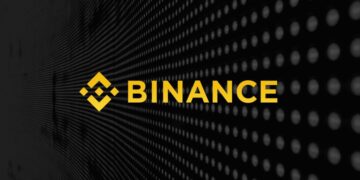The yr 2025 marks a pivotal second within the journey of Generative AI (Gen AI). What started as a captivating technological novelty has now advanced right into a vital software for companies throughout numerous industries.
Generative AI: From Answer Trying to find a Drawback to Drawback-Fixing Powerhouse
The preliminary surge of Gen AI enthusiasm was pushed by the uncooked novelty of interacting with massive language fashions (LLMs), that are educated on huge public information units. Companies and people alike had been rightfully smitten by the flexibility to sort in pure language prompts and obtain detailed, coherent responses from the general public frontier fashions. The human-esque high quality of the outputs from LLMs led many industries to cost headlong into initiatives with this new expertise, usually with no clear enterprise downside to resolve or any actual KPI to measure success. Whereas there have been some nice worth unlocks within the early days of Gen AI, it’s a clear sign we’re in an innovation (or hype) cycle when companies abandon the apply of figuring out an issue first, after which searching for a workable expertise resolution to resolve it.
In 2025, we anticipate the pendulum to swing again. Organizations will look to Gen AI for enterprise worth by first figuring out issues that the expertise can handle. There’ll absolutely be many extra nicely funded science initiatives, and the primary wave of Gen AI use circumstances for summarization, chatbots, content material and code era will proceed to flourish, however executives will begin holding AI initiatives accountable for ROI this yr. The expertise focus may even shift from public general-purpose language fashions that generate content material to an ensemble of narrower fashions which might be managed and regularly educated on the distinct language of a enterprise to resolve real-world issues which influence the underside line in a measurable manner.
2025 would be the yr AI strikes to the core of the enterprise. Enterprise information is the trail to unlock actual worth with AI, however the coaching information wanted to construct a transformational technique shouldn’t be on Wikipedia, and it by no means can be. It lives in contracts, buyer and affected person information, and within the messy unstructured interactions that usually circulation by the again workplace or dwell in packing containers of paper.. Getting that information is sophisticated, and basic function LLMs are a poor expertise match right here, however the privateness, safety and information governance issues. Enterprises will more and more undertake RAG architectures, and small language fashions (SLMs) in non-public cloud settings, permitting them to leverage inner organizational information units to construct proprietary AI options with a portfolio of trainable fashions. Focused SLMs can perceive the precise language of a enterprise and nuances of its information, and supply increased accuracy and transparency at a decrease value level – whereas staying consistent with information privateness and safety necessities.
The Vital Position of Information Scrubbing in AI Implementation
As AI initiatives proliferate, organizations should prioritize information high quality. The primary and most important step in implementing AI, whether or not utilizing LLMs or SLMs, is to make sure that inner information is free from errors and inaccuracies. This course of, generally known as “information scrubbing,” is important for the curation of a clear information property, which is the lynchpin for the success of AI initiatives.
Many organizations nonetheless depend on paper paperwork, which must be digitized and cleaned for everyday enterprise operations. Ideally, this information would circulation into labeled coaching units for a corporation’s proprietary AI, however we’re early days in seeing that occur. In reality, in a current survey we carried out in collaboration with the Harris Ballot, the place we interviewed greater than 500 IT decision-makers between August-September, discovered that 59% of organizations aren’t even utilizing their total information property. The identical report discovered that 63% of organizations agree that they’ve a lack of know-how of their very own information and that is inhibiting their capacity to maximise the potential of GenAI and comparable applied sciences. Privateness, safety and governance issues are actually obstacles, however correct and clear information is vital, even slight coaching errors can result in compounding points that are difficult to unwind as soon as an AI mannequin will get it incorrect. In 2025, information scrubbing and the pipelines to make sure information high quality will grow to be a vital funding space, guaranteeing {that a} new breed of enterprise AI methods can function on dependable and correct data.
The Increasing Affect of the CTO Position
The function of the Chief Expertise Officer (CTO) has at all times been essential, however its influence is about to broaden tenfold in 2025. Drawing parallels to the “CMO period,” the place buyer expertise underneath the Chief Advertising Officer was paramount, the approaching years would be the “era of the CTO.”
Whereas the core tasks of the CTO stay unchanged, the affect of their selections can be extra vital than ever. Profitable CTOs will want a deep understanding of how rising applied sciences can reshape their organizations. They have to additionally grasp how AI and the associated fashionable applied sciences drive enterprise transformation, not simply efficiencies inside the firm’s 4 partitions. The choices made by CTOs in 2025 will decide the longer term trajectory of their organizations, making their function extra impactful than ever.
The predictions for 2025 spotlight a transformative yr for Gen AI, information administration, and the function of the CTO. As Gen AI strikes from being an answer in the hunt for an issue to a problem-solving powerhouse, the significance of information scrubbing, the worth of enterprise information estates and the increasing influence of the CTO will form the way forward for enterprises. Organizations that embrace these adjustments can be well-positioned to thrive within the evolving technological panorama.












![Why Ethereum [ETH] address outflows may be headed for DeFi](https://cryptonoiz.com/wp-content/uploads/2023/03/AMBCrypto_An_image_of_a_stylized_Ethereum_logo_with_arrows_poin_22f2aeff-c7bb-4c7d-aec7-547a37a35e82-1-1000x600-360x180.jpg)





























